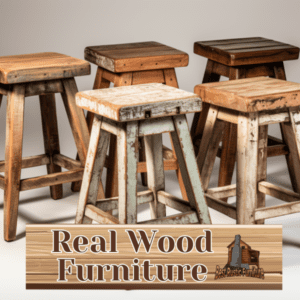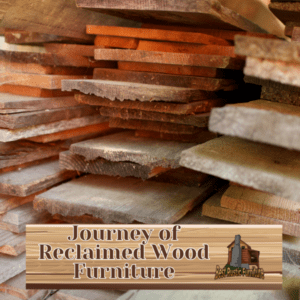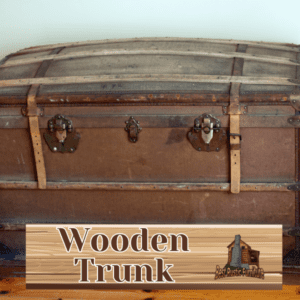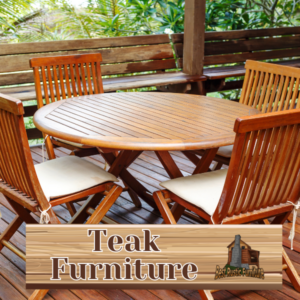
Vintage interiors have experienced a resurgence in popularity as the charm of the past meets the present. Defined by their nostalgic appeal and connection to a bygone era, vintage interiors offer a unique and timeless aesthetic that is now sought after in modern spaces. This article explores the concept of vintage interiors, their increasing popularity, and how to incorporate them into contemporary designs. We will discuss the importance of choosing the right vintage pieces, creating a cohesive design, and striking a balance between vintage and contemporary elements. we will explore popular vintage interior styles such as Art Deco, Mid-Century Modern, and Bohemian. Finally, we will look at the future of vintage interiors and the importance of preserving and restoring vintage pieces. Get ready to embark on a journey where the past beautifully merges with the present in the realm of interior design.
Key takeaways:
- Vintage interiors are making a comeback: The nostalgic appeal and sustainable movement have contributed to the renewed popularity of vintage interiors, as people seek to incorporate the past into their modern spaces.
- Strategies for incorporating vintage interiors: Choosing the right vintage pieces and creating a cohesive design are key to successfully incorporating vintage elements into modern spaces. Balancing proportion and utilizing a complementary color palette are also important considerations.
- Popular vintage interior styles: Art Deco, Mid-Century Modern, and Bohemian are some of the popular vintage interior styles that people are embracing to infuse character and charm into their homes.
The Rebirth of Vintage Interiors: Past Meets Present
When it comes to vintage interiors, there has been a resurgence in their popularity as people discover the charm and character they bring to their spaces. The rebirth of vintage interiors, known as “The Rebirth of Vintage Interiors: Past Meets Present,” means that past design and decor elements are meeting the present, creating unique and nostalgic environments. This trend allows individuals to incorporate a mix of old and new, blending classic pieces with modern accents. Vintage interiors offer a sense of history and personality, while also showcasing individual style and creativity. Whether it’s through furniture, accessories, or color schemes, the rebirth of vintage interiors adds a touch of timeless beauty to any home.
What are Vintage Interiors?
Step back in time and discover the allure of vintage interiors. In this section, we’ll unravel the essence of vintage interiors, embracing the magic of blending the past with the present. From its defining characteristics to the captivating stories it holds, we’ll embark on a journey through the world of vintage design. So, get ready to be transported to an era where nostalgia meets contemporary flair, and uncover the charm of vintage interiors like never before.
Defining Vintage Interiors
Vintage interiors, when defining vintage interiors, refer to the design and decor styles from past eras, typically ranging from the early 20th century to the 1980s. These vintage interiors capture the essence of a specific time period, incorporating furniture, accessories, and color schemes that were popular during that era. Characterized by their unique charm, nostalgia, and attention to detail, vintage interiors often feature elements such as retro furniture, bold patterns, vibrant colors, and unique art pieces. To define vintage interiors, it involves understanding the historical context and design aesthetics of different time periods, allowing for the creation of authentic and visually appealing spaces.
The Popularity of Vintage Interiors
Get ready to step into a world where the past meets the present – the world of vintage interiors. In this section, we’ll dive into the captivating allure of vintage interiors and why they’ve gained immense popularity. From the irresistible nostalgia they evoke to their contribution to the sustainable movement, we’ll uncover the secrets behind the rising trend of vintage interiors. So fasten your seatbelts as we embark on a journey filled with charm, character, and a touch of history.
The Nostalgic Appeal
The nostalgic appeal of vintage interiors is a key factor driving their popularity in modern design. Vintage interiors evoke feelings of nostalgia and a longing for the past, reminding us of a simpler and perhaps happier time. The unique charm and character of vintage pieces add a touch of authenticity and history to modern spaces, contributing to their timeless aesthetics. Vintage items often have personal stories and memories attached to them, making them meaningful and sentimental additions to our homes. Additionally, choosing vintage interiors promotes sustainable consumption by giving these items a second life, reducing waste and the environmental impact of manufacturing new furniture. Furthermore, vintage interiors provide inspiration for contemporary design, offering a wealth of styles, colors, and patterns to draw from.
The Sustainable Movement
As vintage interiors continue to gain popularity, the sustainable movement plays a significant role in their resurgence.
- Reducing Waste: Choosing vintage furniture and décor items helps divert them from landfills, minimizing environmental impact.
- Resource Conservation: By repurposing and upcycling old pieces, the need for new production and the depletion of resources is reduced.
- Supporting Local: Vintage shopping supports local businesses and artisans, promoting a more sustainable and ethical economy.
- Quality and Longevity: Vintage pieces are often made with superior craftsmanship and durable materials, ensuring they can be enjoyed for years to come.
How to Incorporate Vintage Interiors into Modern Spaces?
Reviving the charm of vintage interiors in our modern spaces – that’s the goal of this section. We’ll explore two key aspects: selecting the perfect vintage pieces and seamlessly blending them into a cohesive design. Get ready to infuse your space with nostalgia and character, as we guide you through the art of harmoniously integrating vintage elements into contemporary settings. Prepare to discover the secrets behind this captivating design approach!
Choosing the Right Vintage Pieces
When incorporating vintage interiors into modern spaces, it is crucial to carefully choose the right vintage pieces. Consider the following tips to ensure you make the best selection:
1. Research: Take the time to educate yourself about the different vintage styles and eras. This will help narrow down your preferences and make a more informed decision.
2. Quality: Inspect the condition of the items you are considering. It is important to choose vintage pieces that are sturdy and well-made to ensure their longevity.
3. Functionality: When selecting vintage pieces, think about how they will serve a practical purpose in your space. This will ensure that they not only add beauty but also contribute to the functionality of your room.
4. Cohesion: To maintain a cohesive design, choose vintage items that complement the overall aesthetic and color scheme of your space. This will create a harmonious and visually appealing environment.
5. Mix and Match: For a balanced look, consider blending vintage pieces with contemporary elements. This combination adds depth and interest to your space, while also showcasing your unique style.
In the early 20th century, vintage pieces were highly sought-after for their craftsmanship and timeless appeal. The Art Deco movement, known for its sleek lines and use of luxurious materials, dominated interior design. Following this, the mid-century modern design emerged, featuring organic shapes and clean lines. Today, vintage interiors are experiencing a resurgence in popularity as people appreciate the unique character and charm they bring to modern spaces. By carefully selecting the right vintage pieces, you can incorporate a touch of nostalgia and style into any room.
Creating a Cohesive Design
To create a cohesive design when incorporating vintage interiors into modern spaces, consider the following tips:
- Choose the Right Vintage Pieces: When selecting vintage items, ensure they complement the existing decor and seamlessly blend with modern elements.
- Pay Attention to Scale and Proportion: It is important to ensure that vintage and contemporary pieces harmonize in terms of size and placement.
- Coordinate Color Palette and Textures: Integrate vintage elements into the design by using matching or complementary colors and textures.
- Mix Styles Thoughtfully: Strategically combine different eras and styles to create an eclectic yet cohesive look.
- Accessorize Thoughtfully: Enhance the design by incorporating vintage accessories such as lamps, artwork, and textiles.
Fact: Did you know that incorporating vintage elements into your design can add character and uniqueness to your space while also promoting sustainability by giving new life to older items?
Mixing Vintage and Contemporary Elements
Get ready to embrace the perfect harmony of past and present. In this section, we’ll dive into the mesmerizing world of mixing vintage and contemporary elements. Discover the secrets of achieving balance and proportion to create stunning visual compositions. Uncover the power of a carefully curated color palette and textures, as they weave together a story that transcends time. It’s time to bring the past to life and create a space that is uniquely yours.
Balance and Proportion
Achieving balance and proportion is crucial when incorporating vintage interiors into modern spaces. It is essential to ensure that the overall design remains visually appealing and harmonious, while merging the vintage and modern elements seamlessly.
To achieve a sense of balance and proportion in your vintage-inspired interior, there are several key considerations to keep in mind. Firstly, it is important to distribute furniture and decor evenly throughout the space, allowing each piece to contribute to the overall visual equilibrium. This will prevent any one item from dominating the room and create a harmonious atmosphere.
Another effective technique is to mix larger statement pieces with smaller accessories. This combination helps create a sense of scale, with the larger items anchoring the space and the smaller ones providing additional visual interest. By finding the right balance between these different elements, you can achieve a well-proportioned and visually pleasing interior.
When it comes to color, select a palette that complements the vintage elements while also blending harmoniously with contemporary accents. This will allow the two styles to coexist and enhance each other. A carefully chosen color scheme will contribute to the overall balance and proportion of the space.
Lastly, creating symmetry by placing complementary pieces on opposite sides of the room can greatly enhance the sense of balance and proportion. This can involve placing identical or similar items on each side, ensuring a visually pleasing and well-balanced arrangement.
By paying attention to balance and proportion, you can successfully merge vintage and modern elements, creating a cohesive and visually pleasing interior design. Achieving harmony between these two styles is key to creating a space that is both nostalgic and contemporary.
Color Palette and Textures
Choosing the right color palette and textures is crucial when incorporating vintage interiors into modern spaces. Here is a table outlining the importance of color and texture in vintage interior design:
| The Color Palette | Textures |
| Opt for earth tones, muted shades, and pastel hues to create a nostalgic and vintage ambiance. | Include rich and tactile textures like velvet, brocade, or silk to add depth and luxury to the space. |
| Avoid loud or garish colors commonly seen in 1970s interior design trends. | Integrate natural textures such as wood, rattan, or wicker for a rustic and organic feel. |
| Consider incorporating pops of color through accessories or accent pieces to create visual interest. | Add texture through rugs, tapestries, or embroidered fabrics to enhance the vintage character of the design. |
Remember, the key is to strike a balance between vintage elements and contemporary design to create a harmonious and timeless space. Experiment with different color combinations and textures to find the perfect blend that reflects your personal style and respects the vintage aesthetic.
Popular Vintage Interior Styles
Vintage interiors have made a triumphant comeback, seamlessly blending the charm of the past with the contemporary demands of the present. As we dive into the captivating world of popular vintage interior styles, we’ll unravel the allure of Art Deco, the timeless appeal of Mid-Century Modern, and the free-spirited essence of Bohemian design. Join us on this journey of discovery as we explore the distinct characteristics and timeless relevance of these beloved vintage styles.
Art Deco
Art Deco, a popular vintage interior style, emerged in the 1920s and 1930s, embodying luxury, glamour, and modernity. Characterized by geometric shapes, bold colors, and decorative details, Art Deco influenced architecture, fashion, and interior design. In an Art Deco-inspired space, you would find sleek furniture, mirrored surfaces, and iconic designs like the Togo sofa or the Maralunga sofa. This elegant style continues to captivate modern audiences, adding a touch of sophistication and nostalgia to any interior. Fun fact: The term “Art Deco” originated from the International Exhibition of Modern Decorative and Industrial Arts held in Paris in 1925.
Mid-Century Modern
Mid-Century Modern is a popular vintage interior style that emerged in the mid-20th century. It is known for its clean lines, organic shapes, and functional design elements. Incorporating Mid-Century Modern into your space can add a retro yet timeless touch.
- Furniture: Look for iconic designs like the Eames Lounge Chair or the Saarinen Tulip Table.
- Colors and Patterns: Opt for muted earth tones or bold pops of color. Geometric patterns and abstract prints are also common.
- Materials: Choose natural materials like wood, leather, and metal to achieve an authentic Mid-Century Modern look.
- Accessories: Add vintage-inspired lighting fixtures, artwork, and decorative accents to complete the style.
Bohemian
The bohemian style is an incredibly popular choice for vintage interior design. It fully embraces an eclectic, free-spirited, and artistic vibe. To bring the bohemian elements seamlessly into your modern space, there are a few key things to consider:
- Infuse your space with vibrant colors and rich textures, such as incorporating patterned rugs and tapestries.
- Add natural elements like plants and woven baskets to create a more organic feel.
- Showcase unique and personal accessories, such as vintage artwork or handmade crafts, to truly make the space your own.
- Create relaxed and comfortable seating areas using floor cushions and low seating arrangements.
- To achieve a layered and bohemian look, experiment and mix different patterns and materials.
By incorporating these bohemian elements, you will be able to effortlessly create a vintage interior with a touch of artistic flair and a free-spirited ambiance. Enjoy the process of curating and arranging your bohemian-inspired space!
The Future of Vintage Interiors
The Future of Vintage Interiors looks bright and promising as more and more people develop an appreciation for the charm and character of older design styles. There is a growing demand for unique, one-of-a-kind pieces that not only add personality to a space but also evoke a sense of nostalgia. Vintage interiors offer a canvas for creativity, allowing individuals to expertly blend and juxtapose different eras to craft a curated look.
In today’s world, with sustainability taking center stage, the reuse and repurposing of vintage items play a crucial role in reducing waste and minimizing environmental impact. The future of vintage interiors is in the hands of those who wholeheartedly embrace the beauty of the past, recognizing its significant value in shaping the present.
Let me share a true story that perfectly encapsulates the power of vintage interiors. Recently, a dear friend of mine decided to revamp her living room, searching for treasures at a local thrift store. Combining mid-century modern pieces with rustic farmhouse accents, she managed to create a refreshingly unique and eclectic space. The transformation left her friends and family in awe, as each piece seemed to have a captivating story to tell. It served as a beautiful reminder of the immense beauty and historical significance that vintage interiors possess, unparalleled in their ability to make any space feel truly special.
Preserving Vintage Pieces
Preserving the beauty of vintage pieces is paramount in our modern world. Delving into the sub-sections of restoration and maintenance, we uncover the secrets of reviving these treasured items. Discover the techniques and strategies that breathe new life into vintage interiors, ensuring their endurance for future generations. Say goodbye to faded glory and embrace the timeless allure of classic design. It’s time to preserve and celebrate the enduring legacy of vintage pieces in the present.
Restoration and Maintenance
Restoration and maintenance of vintage interiors require meticulous attention and skilled craftsmanship to uphold their original charm and character. Here are the essential steps to follow:
1. Assess the condition: Carefully examine each piece for any signs of damage, such as cracks, chips, or stains.
2. Clean and repair: Utilize gentle cleaning solutions to eliminate dirt and grime. Additionally, address any structural damage or loose components through repair.
3. Research and source materials: Discover authentic materials that align with the era of the interior, such as vintage wallpapers or fabrics.
4. Preserve original finishes: Retain the authenticity of the vintage interiors by preserving the original paint, wood finishes, or hardware.
5. Upholstery and reupholstery: Reupholster furniture using fabrics that are appropriate for the respective time period, or meticulously repair the existing upholstery.
6. Consistent maintenance: Take the necessary measures to regularly clean, dust, and polish vintage pieces, thus preventing any deterioration over time.
By adhering to these steps, you can ensure the endurance and aesthetics of your vintage interiors, allowing them to continue narrating their individualistic tales.
Some Facts About The Rebirth of Vintage Interiors: Past Meets Present:
- ✅ White and gray kitchens are becoming less popular, with a decline in votes for these colors and a rise in colorful kitchens. (Source: Our Team)
- ✅ Animal prints, especially zebra, are no longer trendy and are considered cheesy. (Source: Our Team)
- ✅ Mass-produced furniture and decor items are being replaced by unique vintage pieces as people seek more soulful and sustainable spaces. (Source: Our Team)
- ✅ Rose gold and gold hardware fixtures may be losing popularity in favor of more subtle and natural materials. (Source: Our Team)
- ✅ Boho style has reached its peak and is no longer in fashion, with cluttered spaces being a downside of this trend. (Source: Our Team)
Frequently Asked Questions
1. Are white and gray kitchens still popular in interior design?
No, white and gray kitchens are becoming less popular as people opt for more colorful kitchen designs.
2. Is animal print still trendy in interior design?
No, animal prints, especially zebra, are no longer considered fashionable and are often seen as cheesy.
3. What is the trend in furniture and decor items?
There is a shift towards unique vintage pieces as people seek more soulful and sustainable spaces, moving away from mass-produced items.
4. Are rose gold and gold hardware fixtures still popular?
Rose gold and gold hardware fixtures may be losing popularity in favor of more subtle and natural materials.
5. Is the boho style still in fashion?
No, the boho style has reached its peak and is no longer considered fashionable, with cluttered spaces being a downside of this trend.
6. Are sliding barn doors still popular in interior design?
Although still popular, sliding barn doors may be losing some of their appeal as the cottagecore trend fades.






